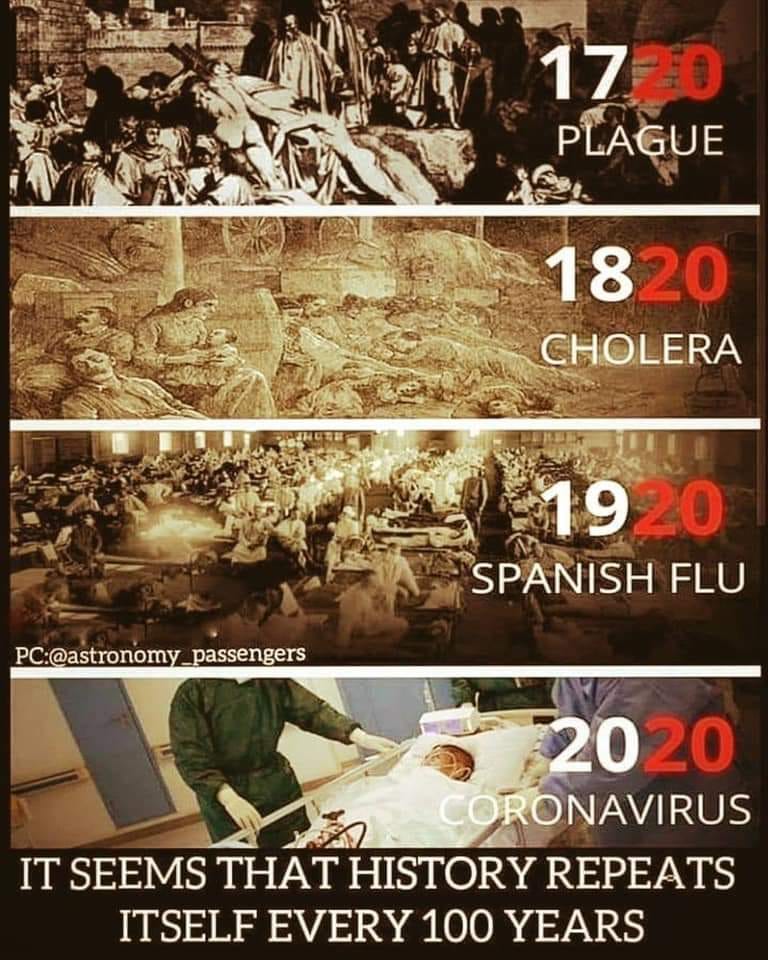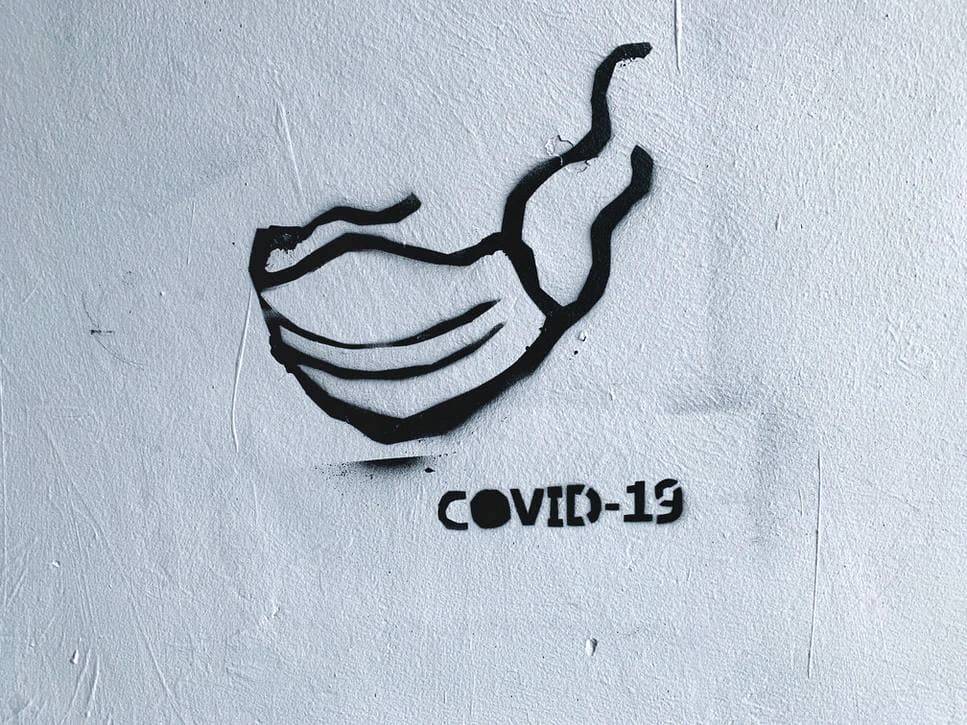A year has passed since WHO announced spread of COVID-19 pandemic. Even before this, information began to appear on the Internet that pandemics happen in the world once in a century: there has already been the plague, cholera, the Spanish flu, and now - coronavirus. We checked whether pandemics really come once every hundred years.
This is what one of the posts on Pikabu looks like: laid out in January 2020, shortly before WHO declared coronavirus a pandemic:
“We have a tradition, every 100 years...
1720 last plague pandemic
1820 cholera pandemic
1920 Spanish flu
2020 (you are here).”
In English-language publications and media, information that pandemics occur once every hundred years began to actively spread in April 2020. This meme has become especially popular. It says: “1720 – plague. 1820 - cholera. 1920 - Spanish flu. 2020 - coronavirus." “It seems like history repeats itself every hundred years,” reads inscription on the picture.

Information began to spread in Russian-language sources even earlier. One of the articles appeared, for example, already on February 28, 2020. It was called “Once every 100 years a great disease comes to Earth. Coincidence?”, and its author speculated: “There is a theory that every 100 years a pandemic virus develops on Earth. We can say that this is a coincidence, but the chronological accuracy is alarming. <…> A logical question arises: what if these pandemics are artificially caused by some sinister force? Maybe some kind of secret organization?
Like the meme, the article mentioned four pandemics: the bubonic plague in 1720, cholera in 1820, the Spanish flu in 1920, and a new type of coronavirus that began spreading from China.
Most publications mention these four cases (although There is and more complete versions). And some of the information about them is even correct. In 1720 indeed was the bubonic plague pandemic, called the Marseilles plague, spread across Europe.
However, this was not the first pandemic of bubonic plague: a much larger pandemic of the disease happened in 1347–1351. According to various estimates, then the disease carried away lives from 75 million to 200 million people. At the same time there were other outbreaks of plague that did not begin at the beginning of the century, and some of them are also considered pandemics.
Regarding the cholera pandemic, started it began not in 1820, but in 1817 and lasted until 1824. This pandemic has mainly affected India and Asia. But behind her followed five more (!) cholera pandemics: all began in the 19th century in different decades and in different regions. And one more - in the 20th century, the countdown of which started in 1961.
Finally, the Spanish flu pandemic too started not in 1920, but in 1918. Moreover, by December 1920, its pace had already slowed down significantly.
Not listed other pandemics that did not begin at the beginning of the century. For example, the HIV/AIDS pandemic, which has continued from 1981 to the present day, as well as other types of influenza, less widespread than the Spanish one: the so-called Asian flu and the Hong Kong flu, which spread in the second half of the 20th century. And many other epidemics that have crossed the threshold beyond which the disease, according to modern WHO standards, begins to be considered a pandemic.
So, no, pandemics do not happen once every hundred years. They can and do happen more often, it’s just that these data do not fit the “astonishing” chronological accuracy, and therefore lovers of numerology and conspiracy theories exclude them from consideration.
Not true
- Visualizing the History of Pandemics
- Hays J. Epidemics and pandemics: their impacts on human history
- Plague Through History
- Have Plagues Repeated Exactly Every 100 Years?
If you find a spelling or grammatical error, please let us know by highlighting the error text and clicking Ctrl+Enter.







